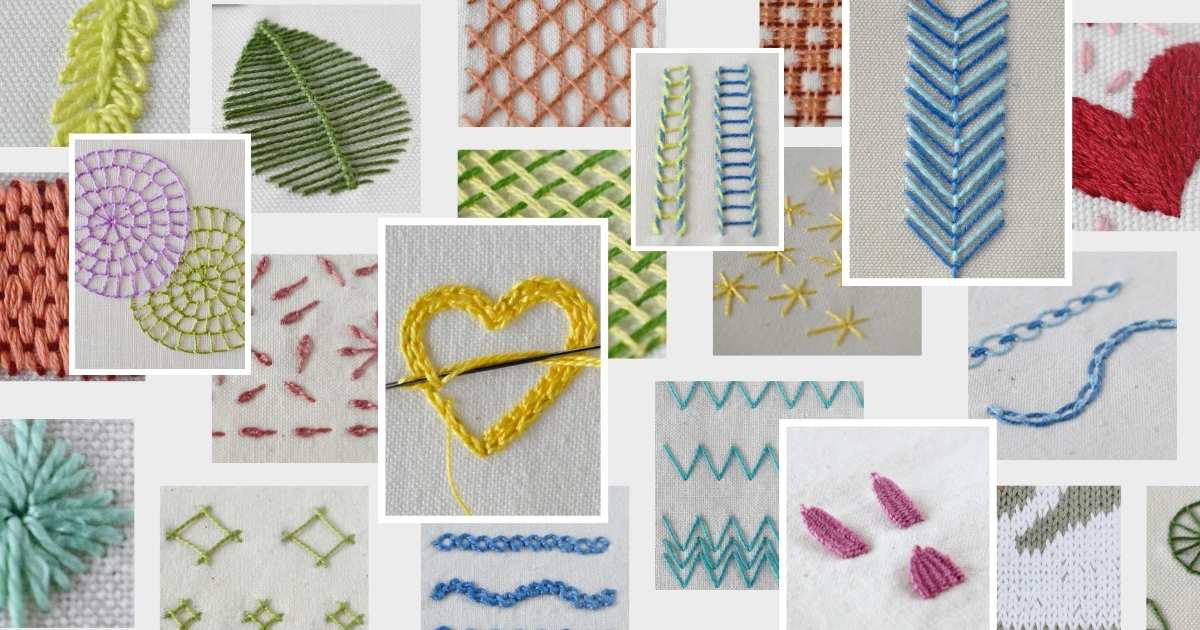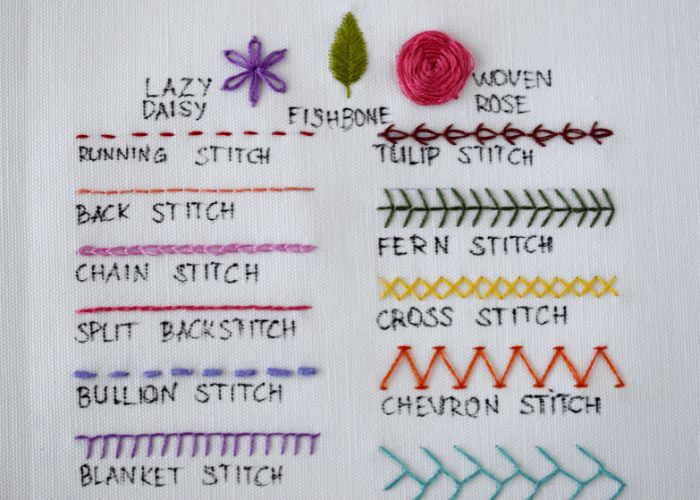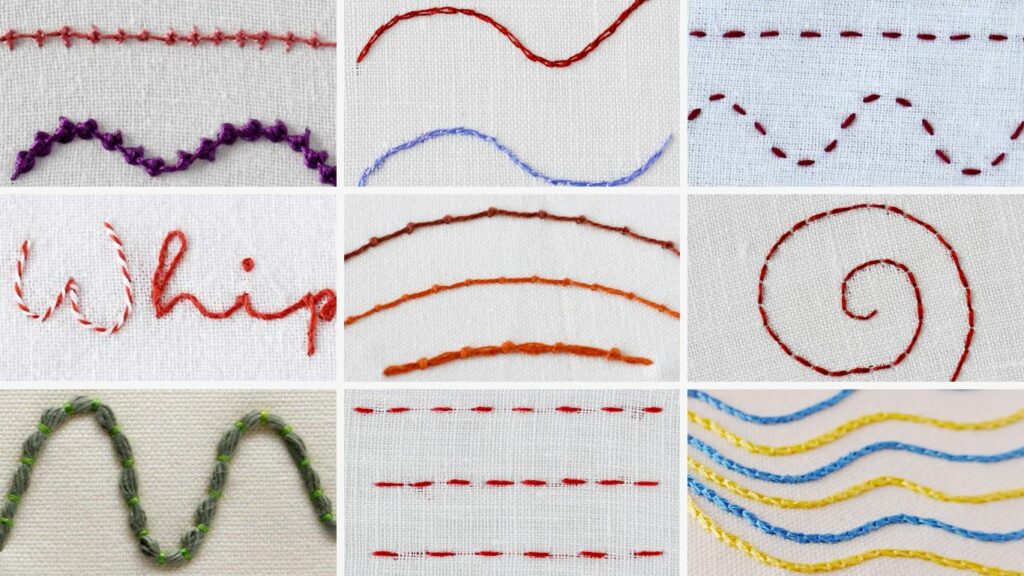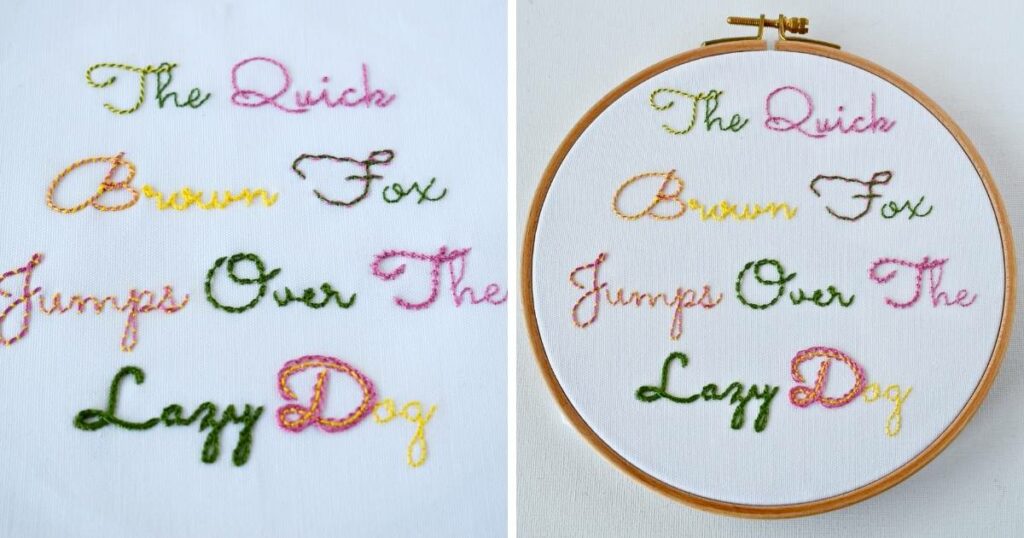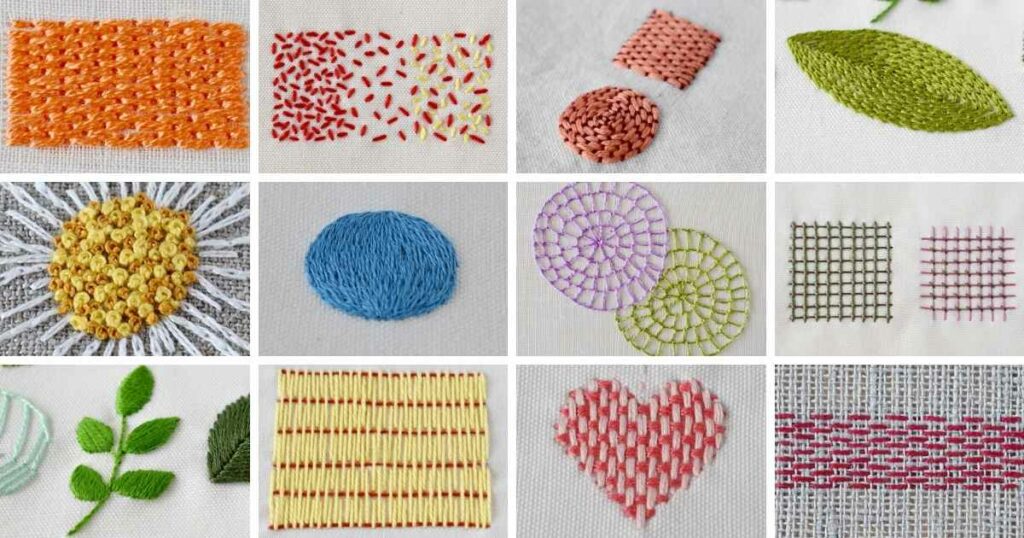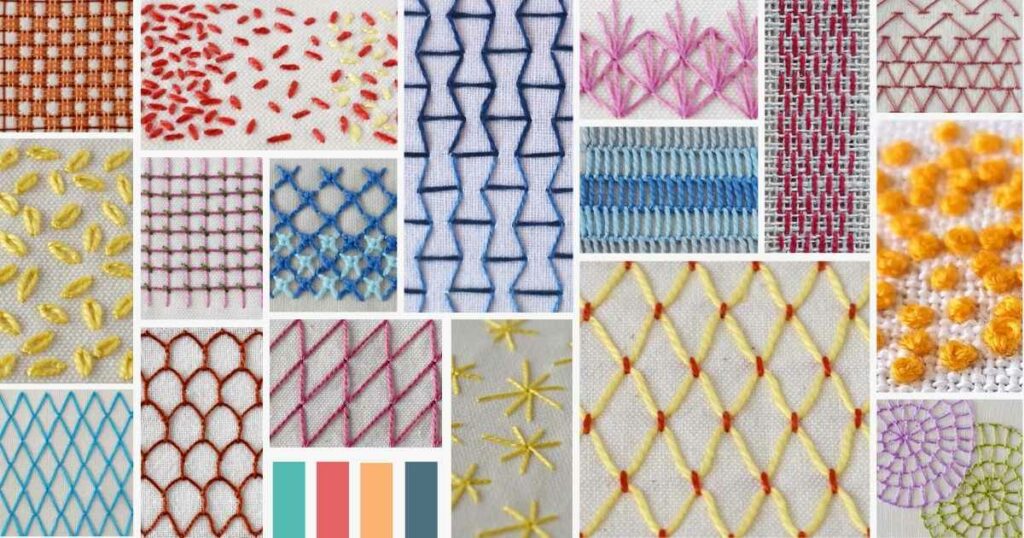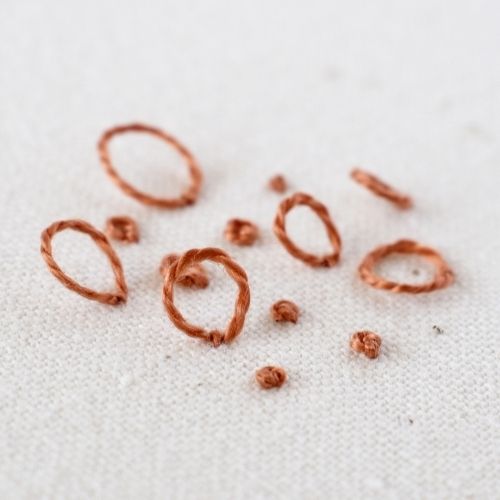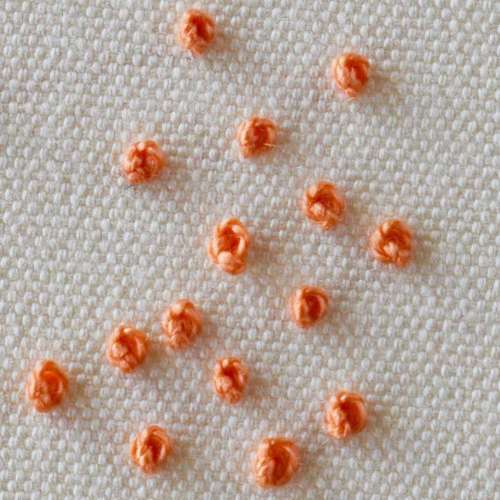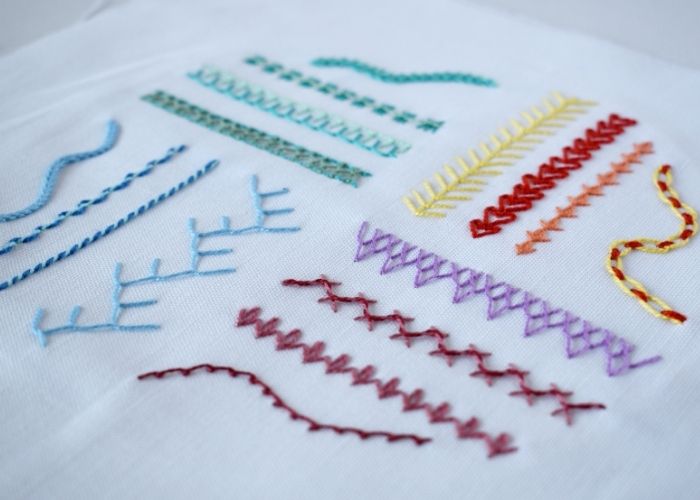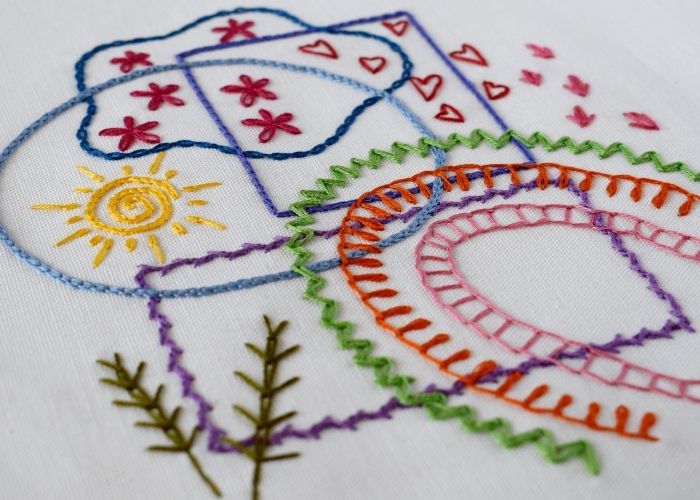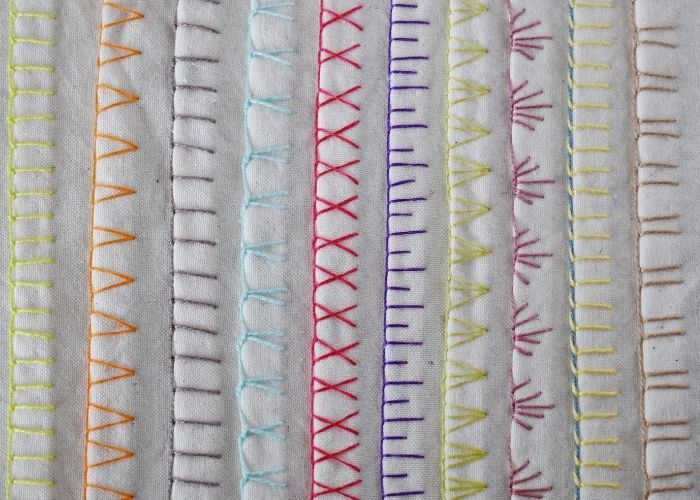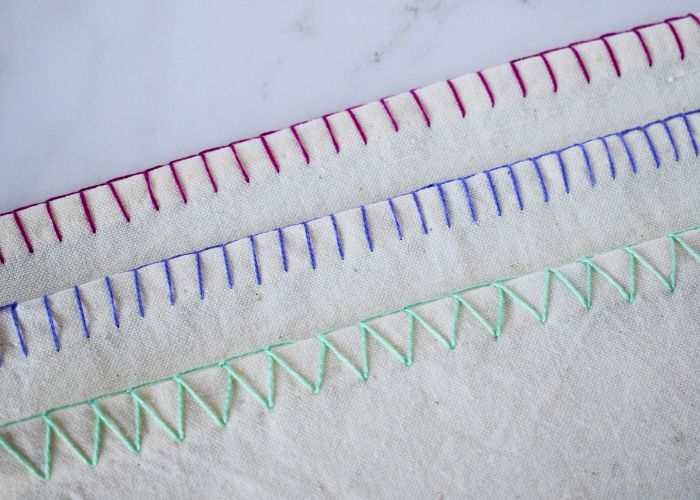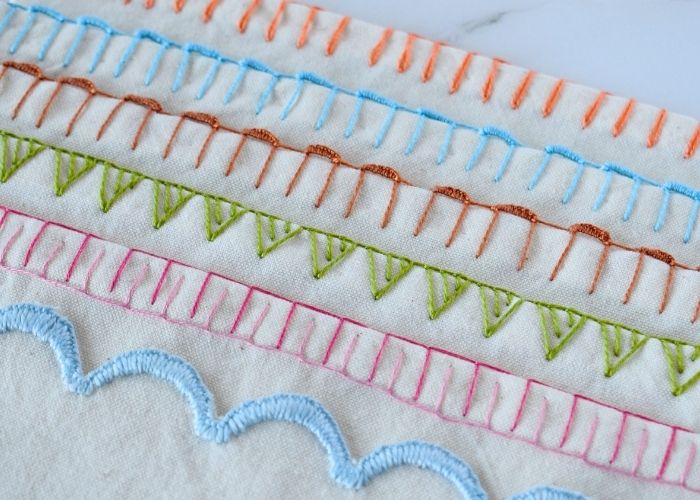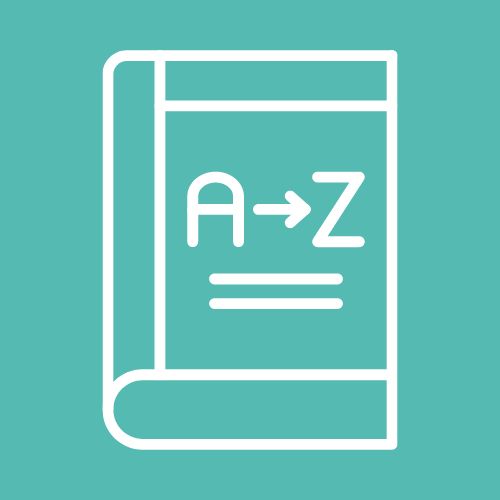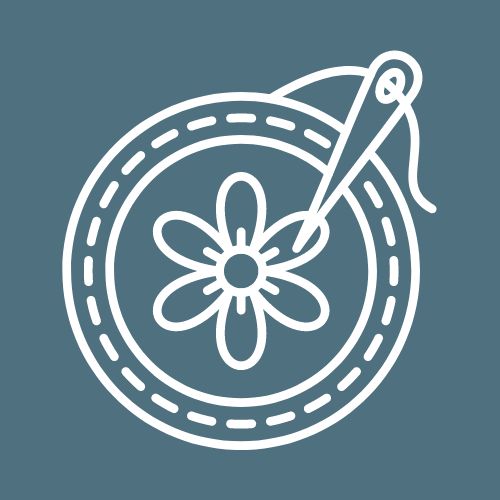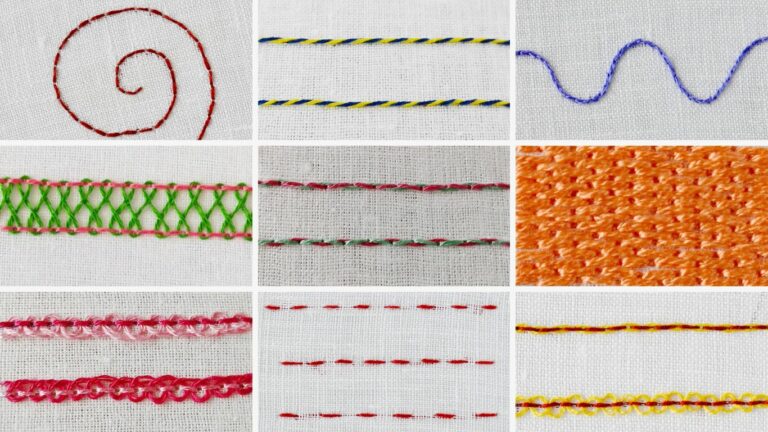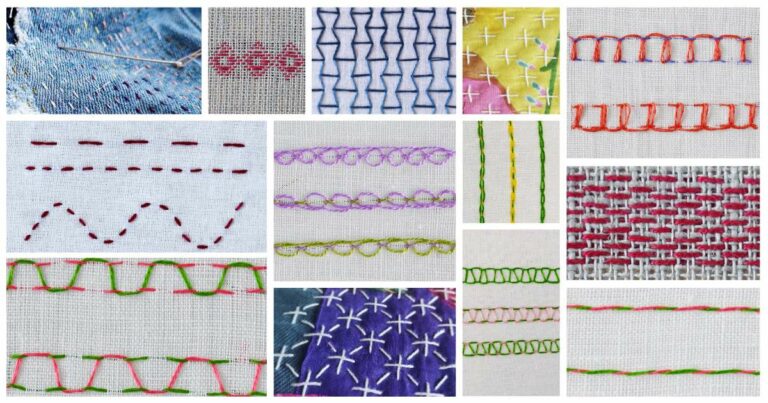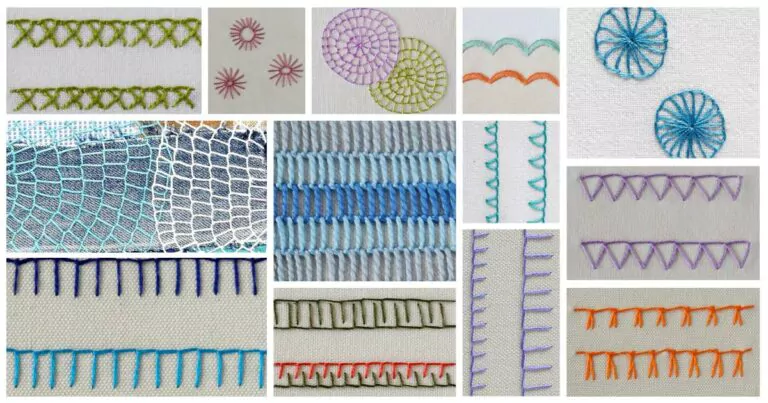Hand embroidery stitches, stitch groups, and families
The classification of hand embroidery stitches by purpose and technique
There are hundreds of documented hand embroidery stitches. Every embroidery technique has its own traditional set of embroidery stitches. Some stitches are considered typical to Crewel embroidery, some – to Brazilian embroidery, and other ones are typical for Goldwork. Surface embroidery uses many of the stitches from all the embroidery techniques.
There is no official or right way to classify the stitches. Some embroidery artists are even against any classifications.
Most of the sources I researched use different ways to classify the stitches. For example, Textile Research Centre organizes the stitches by the technique used to make them. You will find the categories of knotting and netting, lace making, looping, smocking, and weaving.
I think that hand embroidery stitches can be grouped by the technique used to make them or by their purpose in surface embroidery. I like to keep things in the drawers. That’s why I use this type of grouping:
Grouping by technique (stitch families)
- Backstitch stitch family
- Blanket stitch family
- Chain stitch family
- Chevron stitch family
- Couching stitch family
- Cretan stitch family
- Cross stitch family
- Feather stitch family
- Fishbone stitch family
- Fly stitch family
- Herringbone stitch family
- Knots
- Running stitch family
- Satin stitch family
- Stem stitch family
- Straight stitch family
- Weaving stitch family
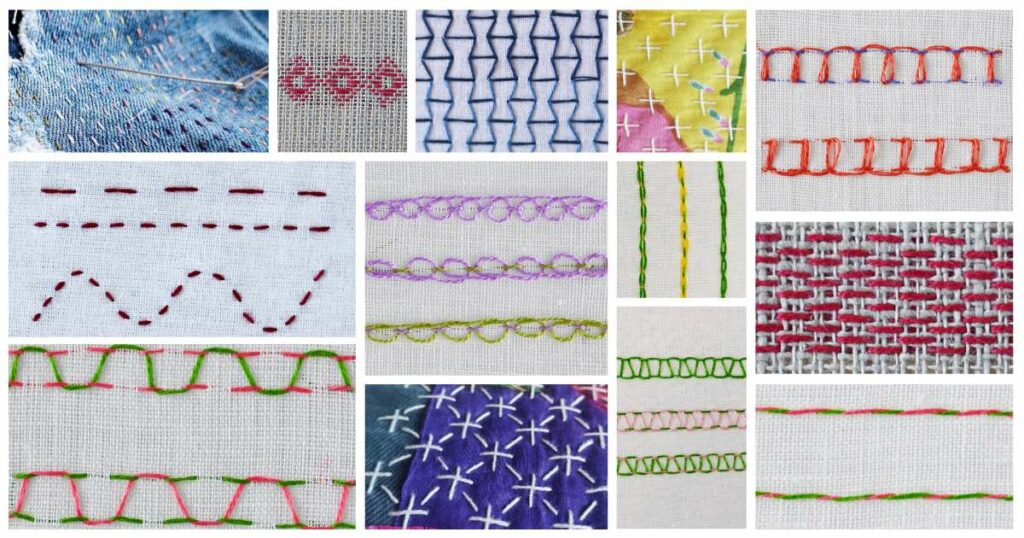
Grouping by a purpose
- Essential or basic stitches
- Outline stitches
- Stitches for lettering
- Filling stitches (Solid fills, Open filling stitches, Textural filling techniques)
- Decorative stitches (detached stitches and knots)
- Border stitches
- Stitches for mending
- Stitches for edging
Sure this kind of grouping is not perfect, as the same embroidery stitch can be used for outlining and borders or a decorative stitch can be used for lettering. For this reason, some of the embroidery stitches will be included in both categories. But, on the other hand, some kind of system, even if it’s not perfect, is better than none.
Essential stitches
Essential stitches of hand embroidery are a set of the most elementary and basic of all stitches. These are holding stitches and finishing stitches, so you know how to start and finish stitching and ensure that the stitches will hold. Also, the most basic stitches like Backstitch, Running stitch, Seed stitch, Chain stitch, and Stem stitch are on this list.
You can learn more about the essential stitches in my overview “Best embroidery stitches. The top 10“, or download a free e-book “Five essential hand embroidery stitches for beginners“.
Outline stitches
Stitches for outlines play a crucial role in hand embroidery. Outline stitches can define shapes, cover pattern transfer lines, and cover uneven stitched edges. Also, you can add details to the embroidery with these stitches. Some of the filling stitches do not have well-defined and neat edges. Outline stitches can make them look better and more defined.
Chain stitch, Stem stitch, or Whipped backstitch are traditional outline stitches. But do not limit yourself to these.
Learn more about hand embroidery stitches for outlines in the article “Hand embroidery stitches for outlines – from the most simple to decorative ones“.
Stitches for lettering
Basically, any hand embroidery stitch could be used for lettering. But of course, some embroidery stitches do the job best.
For basic lettering purposes, the Backstitch (or a Whipped backstitch), Stem stitch, and Chain stitch will be more than enough. Backstitch is excellent for simple printed letters and for outlines of more decorative fonts.
If you want to embroider elegant script letters, use a Stem Stitch, Whipped Backstitch or a decorative Palestrina Stitch that depict handwritten fonts, scrips, and cursive letters with ease. And if you want to do classical monogram lettering – you will have to perfect your Satin Stitch skills.
To dive deeper into lettering with stitches, check out these free resources:
Filling stitches
Filling stitches are a big group of hand embroidery stitches that we use to fill in the specific parts of the design or the areas around the design. Some filling stitches will completely cover a background fabric. Others will leave a material more or less visible.
Remember that if the design involves filling and outlining, filling stitches are embroidered first. And, if parts of the design look like they are emerging from behind other areas, these should be addressed in the first place.
The most commonly known filling stitches are the Satin stitch, Long and short stitch, Trellis stitch, Leaf stitch, Herringbone stitch, Weave stitch, and many more.
For visual examples of filling stitches watch this video tutorial on Practical Embroidery YouTube channel or read one of these articles:
- The Ultimate Guide to Embroidery Stitches for Filling: Master Texture, Coverage & Dimension
- Open Filling Stitches For Light and Airy Fills in Modern Hand Embroidery
Decorative stitches – detached stitches and knots
Decorative stitches, also called surface stitches, will embellish and highlight your embroidered designs. They add texture to the embroidery and often play as an eye-catching detail.
The variety of these stitches is endless. Think about the Detached chain stitch, French knots, Bullion stitch, Woven Wheel stitch, or Pistil stitch.
Border stitches
Border stitches are a group of hand embroidery stitches that can be used for border designs. It’s not a specific technique but a pattern we use to lay out the stitches to create decorative borders for household objects or clothes. For example, border designs are often used to embellish tablecloths and tea towels or decorate our garments. It is common to use border designs in quilting too.
Corners of the border design also play a significant role as they are often the most decorative yet complex part of the stitching.
Hand embroidery for borders varies from simple Backstitch to complex composite stitches, combining three or more stitches to create breathtaking designs.
Often we can see the stitches like Scallop stitch, Pekinese stitch, Herringbone ladder stitch, or a Chevron stitch used as border stitches.
To learn more about border designs, read these articles:
- Simple Stitches For Borders: Hand Embroidery Tutorial For Beginners
- 14 Chain Stitch Variations For Borders, Outlines, and Decoration
Stitches for edging
Edging with hand embroidery is the simplest and most common hand sewing and embellishment technique we can use to secure the edges of garments or household textiles. However, it doesn’t have to be boring or basic. There are numerous decorative variations of the Blanket Stitch and other stitch families for edging that you can learn and use in your hand sewing or hand embroidery practice.
Hand embroidery stitches, stitch groups, and families on this Blog
In the Stitch Library A-Z on this Blog, you can search hand embroidery stitches by name. In the Stitch Library by technique – the stitches are listed by the stitch family and in the Visual library of embroidery stitches you can browse the images of various embroidery techniques and choose which one you would like to learn today.
Also, you will find blog articles about different hand embroidery stitches by the purpose of the stitch published on this Blog from time to time.
Final thoughts
As I mentioned at the beginning, there is no right or wrong way to classify hand embroidery stitches, and this article does not intend to do so. However, I find it easier to navigate in the ocean of information on hand embroidery with a bit of structure. So, I hope this will be helpful also for other hand embroidery enthusiasts.

